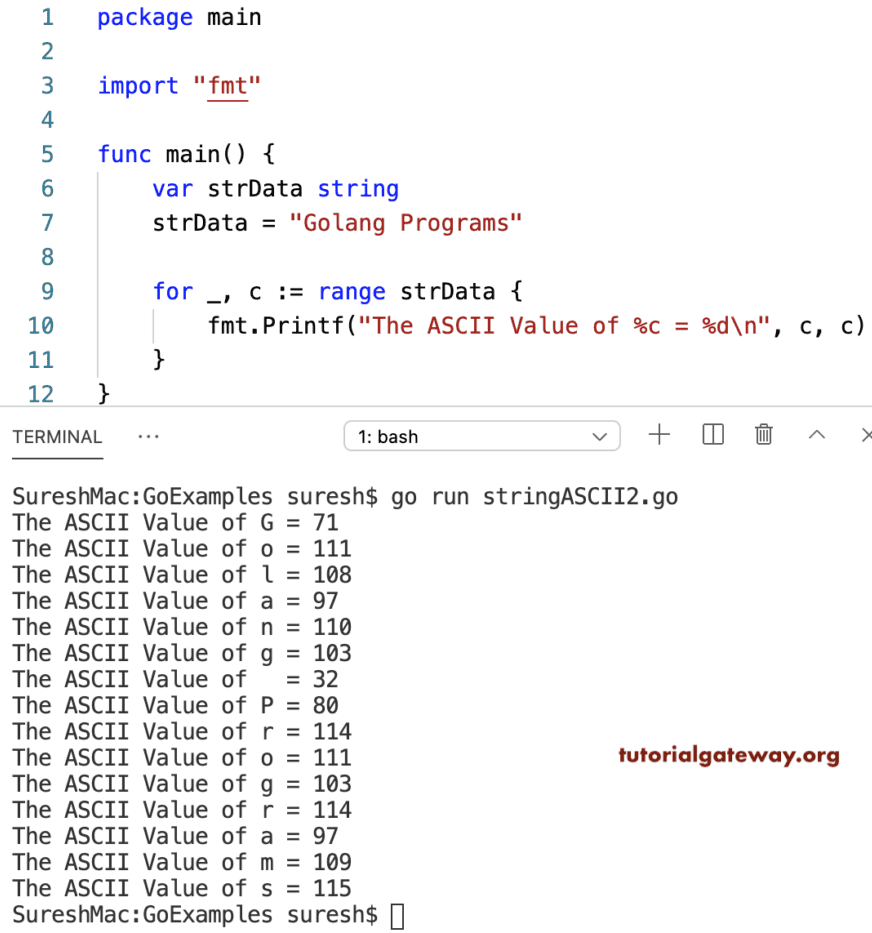编写一个 Go 程序来打印字符串所有字符的 ASCII 值。 for 循环(for i := 0; i < len(strData); i++)会迭代字符串的字符,从开头到字符串长度。在循环内,printf 语句会打印 ASCII 值。为此,我们使用 %d 或 %v 字符串格式化选项。
package main
import (
"bufio"
"fmt"
"os"
)
func main() {
reader := bufio.NewReader(os.Stdin)
fmt.Print("Enter Any String to find ASCII Values = ")
strData, _ := reader.ReadString('\n')
for i := 0; i < len(strData); i++ {
fmt.Printf("The ASCII Value of %c = %d\n", strData[i], strData[i])
}
}
Enter Any String to find ASCII Values = hello
The ASCII Value of h = 104
The ASCII Value of e = 101
The ASCII Value of l = 108
The ASCII Value of l = 108
The ASCII Value of o = 111Go 程序使用 for 循环 range 打印字符串字符的 ASCII 值
package main
import "fmt"
func main() {
var strData string
strData = "Golang Programs"
for _, c := range strData {
fmt.Printf("The ASCII Value of %c = %d\n", c, c)
}
}

这个 Golang 程序返回字符串字符的 ASCII 值,与第一个示例相同。但是,我们使用了 %v 而不是 %d。
package main
import (
"fmt"
)
func main() {
strData := "Tutorial Gateway"
for i := 0; i < len(strData); i++ {
fmt.Printf("The ASCII Value of %c = %v\n", strData[i], strData[i])
}
}
The ASCII Value of T = 84
The ASCII Value of u = 117
The ASCII Value of t = 116
The ASCII Value of o = 111
The ASCII Value of r = 114
The ASCII Value of i = 105
The ASCII Value of a = 97
The ASCII Value of l = 108
The ASCII Value of = 32
The ASCII Value of G = 71
The ASCII Value of a = 97
The ASCII Value of t = 116
The ASCII Value of e = 101
The ASCII Value of w = 119
The ASCII Value of a = 97
The ASCII Value of y = 121